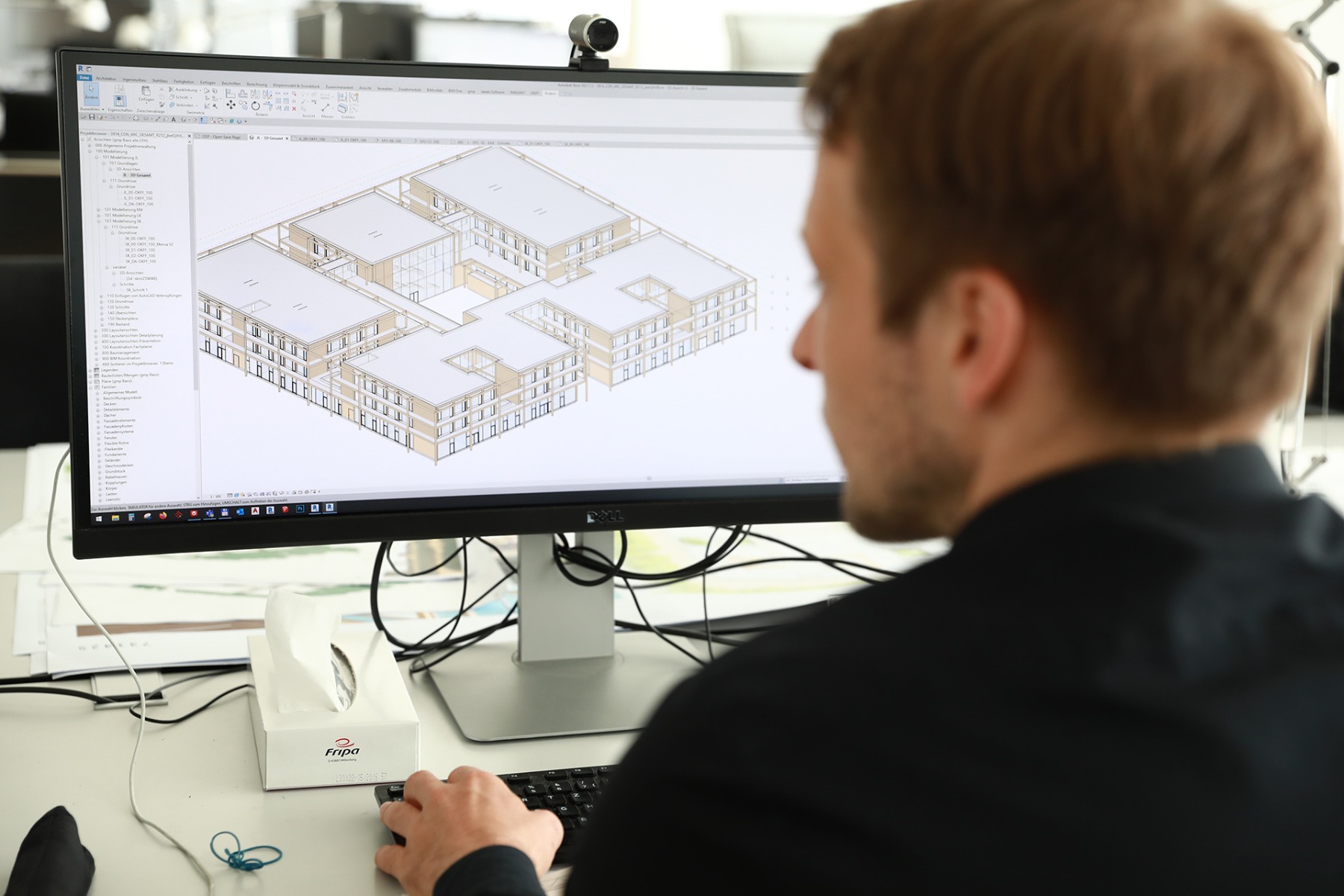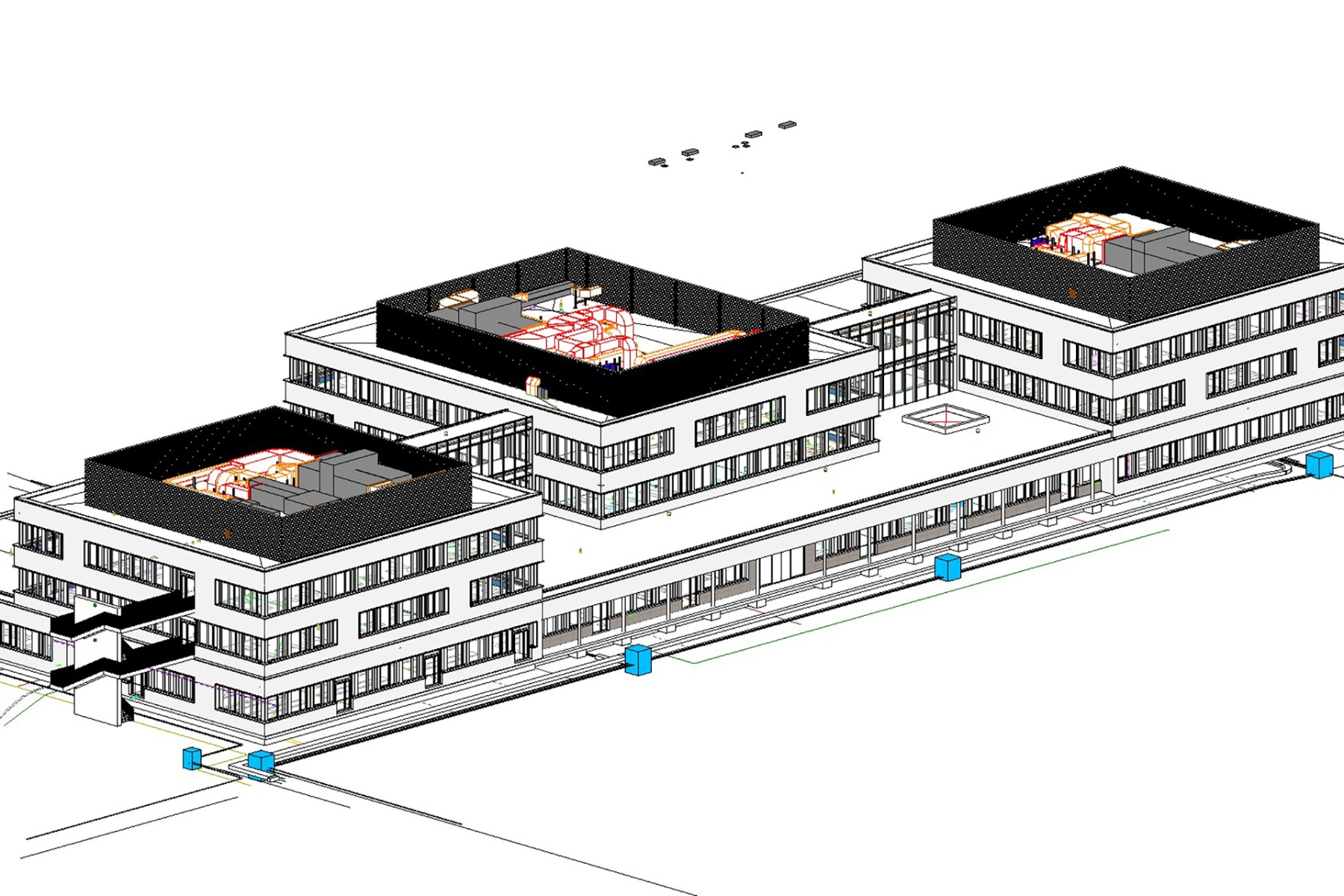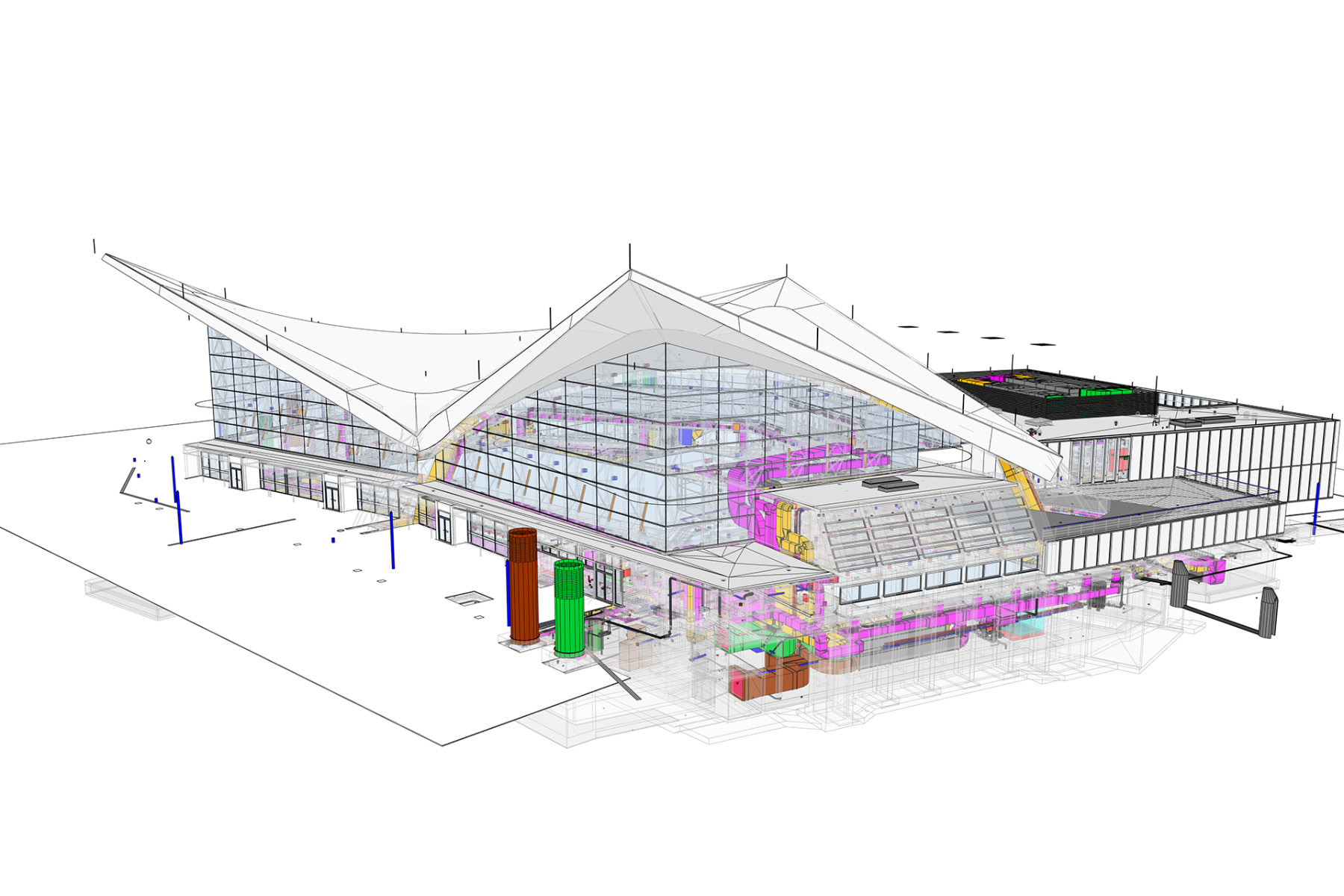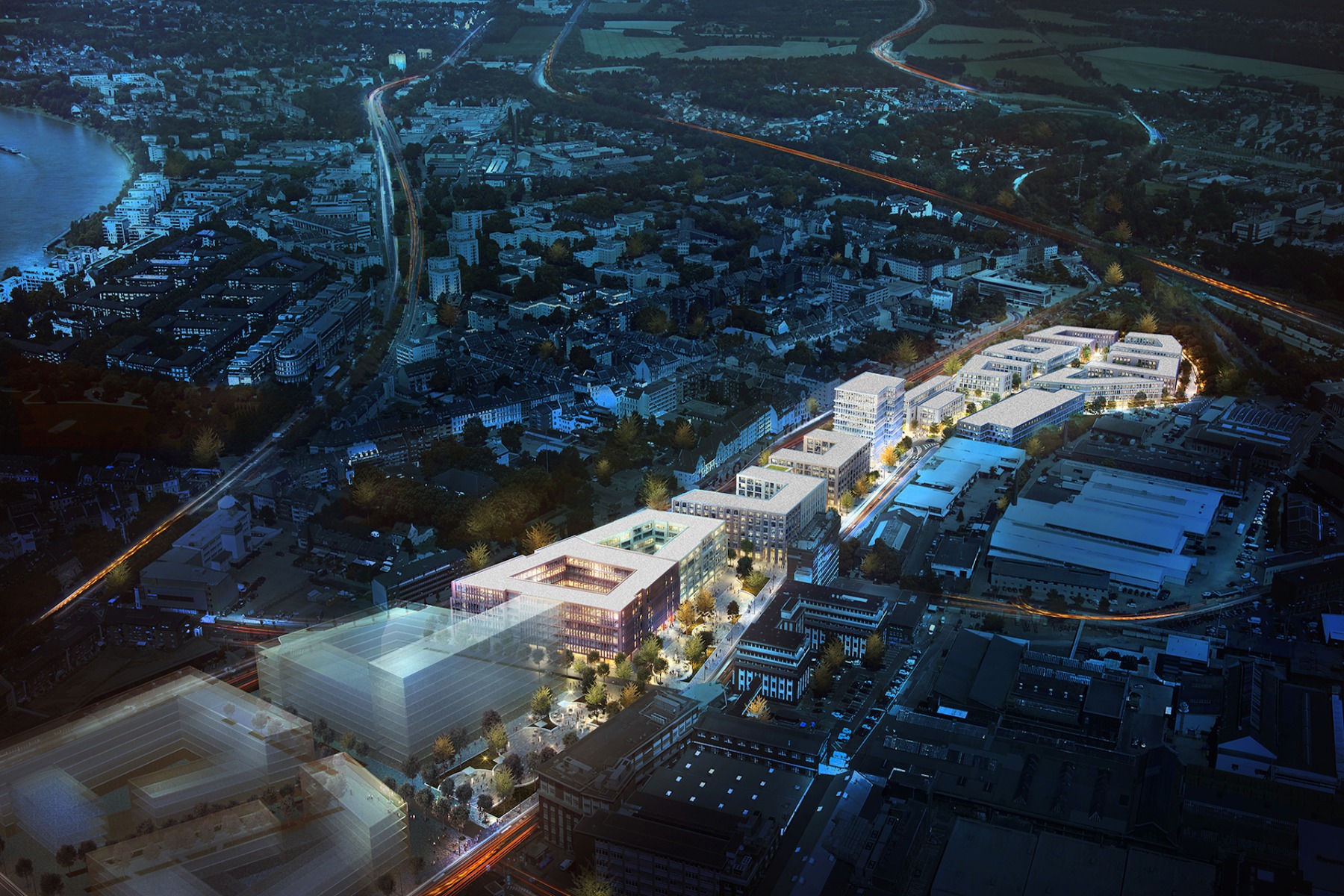BIM strategies in architectural offices
Everything Under Control?

© gmp architekten von Gerkan, Marg und Partner
BIM may involve a lot of work at the early stages of planning, but this quickly pays off later on. According to Christian Hellmund and Regine Saunders of gmp Architekten, the decisive factor is that architects are consistently involved throughout all phases of work.


© Inga Sommer
Over the past few years, which areas of planning and building have undergone the greatest changes thanks to digitization?
Regine Saunders: The greatest advantage for planning − particularly for our clients − has resulted from better coordination and the data-based assessment of models. This makes the cost development transparent. Whenever many parties work together under time and cost pressure, BIM enables enormous synergies. Routines can be carried out in the background, and decisions can be made based on models; this saves time and money. Our Isarphilharmonie project is an example of an undertaking that was realized only with the help of the latest planning methods when it came to time and cost frameworks. It has been positively received by specialists, users and visitors alike. A further advantage of BIM lies in the possibility for better evaluation after a project has been completed. We use this monitoring in order to optimize work flows.
Where are things still not working as you would like them to?
Christian Hellmund: Digitization of planning processes is happening at breakneck speed, but it is still not necessarily a matter of course. A lack of expertise in individual project partners does reduce the benefits. Moreover, in our experience, the chances of digital building models being used after completion of planning have not been fully exploited. In terms of sustainability, enormous potential still lies in the use of digital building models, for instance for monitoring and optimizing technical systems in operation, or for the future use of the building as raw materials in the cycle of materials. We are currently developing a system that will consider the future reuse of a building, or individual parts of it, right from the planning stage.


© gmp architekten von Gerkan, Marg und Partner
How has your collaborative work changed due to BIM?
Christian Hellmund: Our planning work has significantly increased thanks to BIM, especially at the beginning of a project. From the start, processes are planned in great detail. But the extra effort pays off in the implementation phase with optimized project controlling. However, the precondition for this is the consistent involvement of architects.


Regine Saunders, © Katja Strempel


Christian Hellmund, © Katja Strempel
Regine Saunders: With BIM, modelling provides a communication structure, for many topics can be discussed in a much more concrete way. Processes are extremely transparent as well.


© gmp architekten von Gerkan, Marg und Partner
What are the most important components of a successful BIM strategy?
Christian Hellmund: Agreement concerning the planning process, project standards and project aims is absolutely decisive before starting any actual planning with BIM. At our studio, we invest a lot of energy into creating a BIM Execution Plan (Ger.: BAP), which is an agreement among all those involved in the project, particularly the clients. We have gained a lot of experience with complex BIM projects that have many planning partners − even with upgrading projects. A solid BAP lays the foundation for successful projects. If this is not agreed and binding, it is easy to get lost among the countless possibilities.


© gmp architekten von Gerkan, Marg und Partner
Regine Saunders is Head of BIM and Christian Hellmund is Associate Partner at gmp Architekten: Gerkan, Marg und Partner.
XXX: X
YYY: Y
ZZZ: Z
AAA: A












